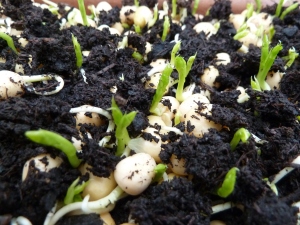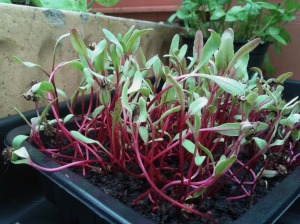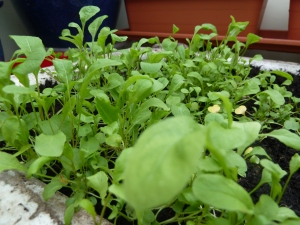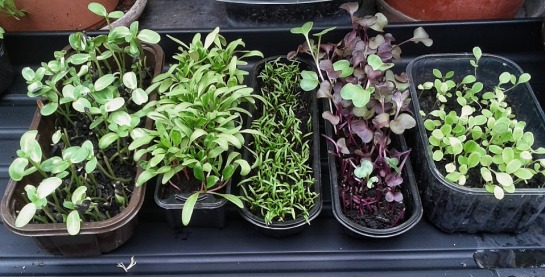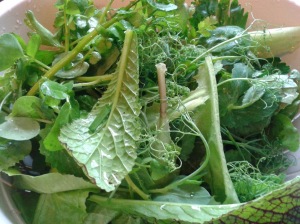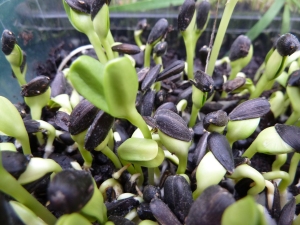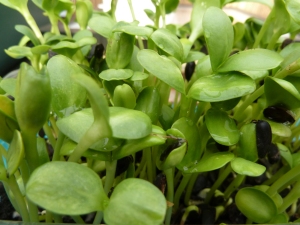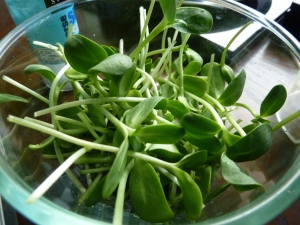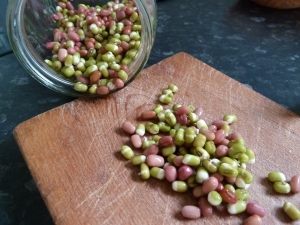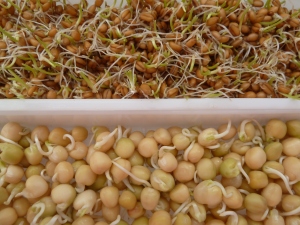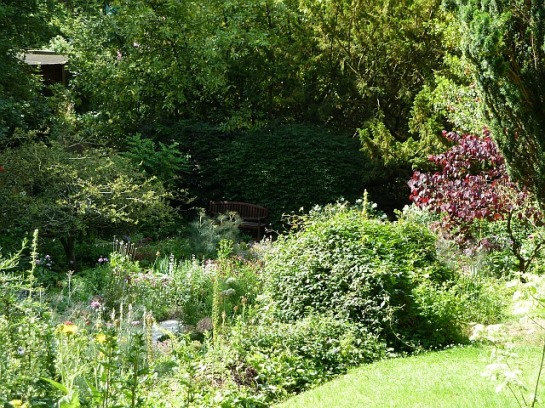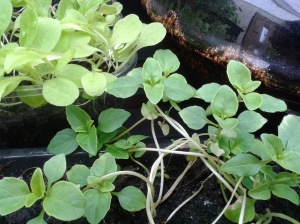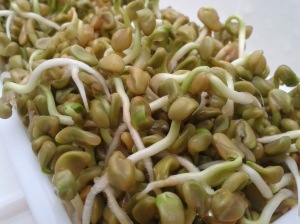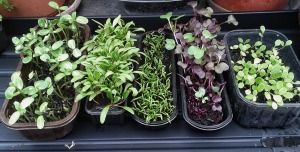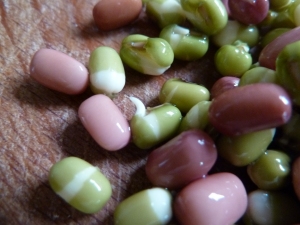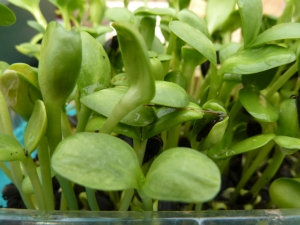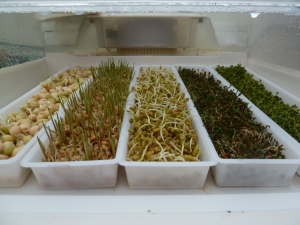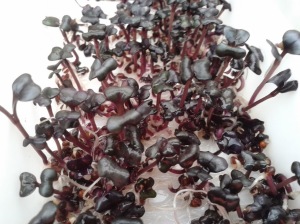Following on from the previous two 'lessons' on sprouts and microgreens, I thought I'd add some extra help with sprouting etc so here we go....
I know I've said it before but buy the best quality seed you can afford - it'll last you ages and it's helping to support people who think like you!
When growing the bigger sprouts onto micros use deeper compost to give them the extra nutrition. I grow my pea shoots in troughs (the type you get for bedding plants!) or you could use plant pots. A 5" plant pot should give you a good crop. Spinach is best grown this way as the seed hulls can be a devil to get rid of without damaging the plants. Let them grow to the stage where the hulls are naturally shed to make life easier! Use spinach as baby leaf salad material.
For the cut and come again approach, where you cut is important! Cut too low and you'll kill them off. You need to leave at least 1-2 inches of plant (look for the crown and avoid cutting into that).
If growing baby salad leaves - feed them with a very dilute seaweed extract feed after cutting - they'll bounce back. You can, with care, get three to four cuts. *This isn't possible with beets and similar but will work for peas, rocket, mustard and sunflowers. You need to leave a crown for them to grow back from. The picture below shows beetroot micros which are only suitable for a single cut. Cut these very low to make the most of that gloriously coloured stem :-)
For baby salad leaves buy or make your own mix of fast growing leaves like rocket, lettuce, mizuna and mibuna. Throw in a few red mustard seeds and you'll have a lovely spicy mix :-) Grow in pots or troughs and keep well watered. You can still do this indoors.
When growing sunflower greens do eat them before the true leaves appear - they're not nice after that (and mine end up with the hens!)
Sow little and often - you don't want gluts! As previously mentioned adopt the twice a week routine (I do Wednesday and Sunday) and you'll be fine.
After a cut - you'll notice others springing up after the main cut. This is your second wave, if you like. This is particularly evident with sunflower greens.
Remember NOT EVERY bean and seed is safe to grow and eat as sprouts or micros, even if we do eat them or their fruit at a later stage. If in doubt, Google it. Some to avoid include tomatoes, aubergine and red kidney beans to name but a few. I don't sprout soya beans - some folks do - I don't because they would still need lots of cooking before they could be used. Plus - it's very hard getting soya beans that are fresh enough to sprout.
Most of all - enjoy - you have a whole new world ahead of you!
